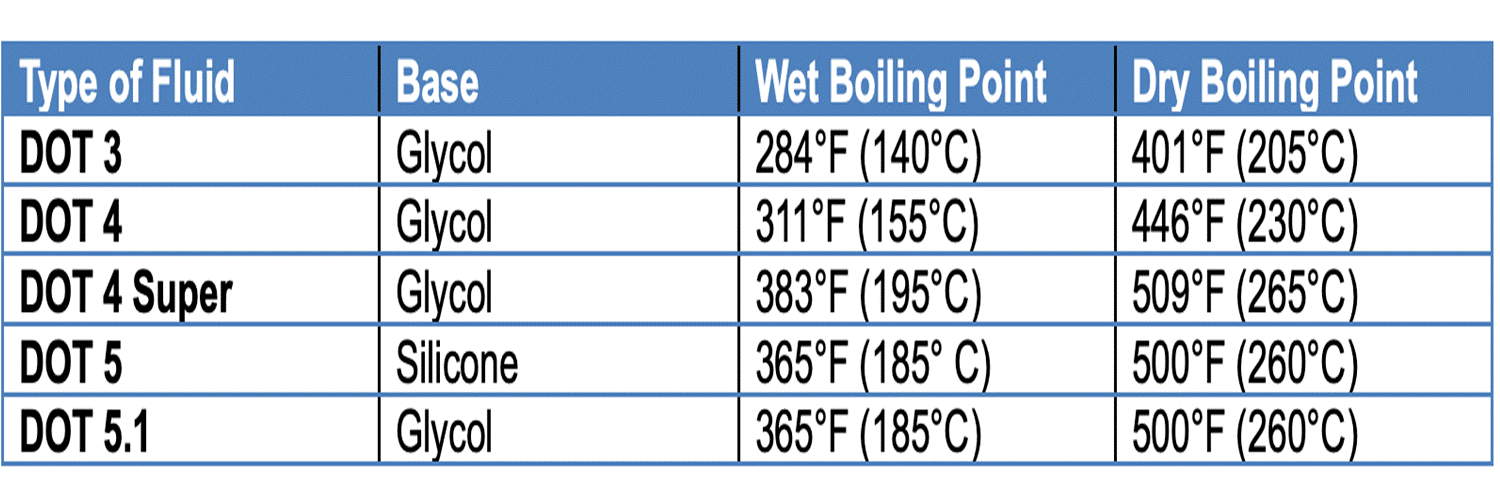RACING BRAKE FLUIDS
THE FUNDAMENTALS
The correct, specifically designed track brake fluid is essential for driver safety, braking performance and a consistent pedal feel.
Confidence in your brakes improves track performance.
Brake fluid is a medium for transmitting hydraulic pressure within the braking system.
If and when brake fluid overheats and boils, the fluid liquid becomes a gas. Liquid is not compressible, but gas is.
In racing, the higher speeds and hard braking, quickly increases the temperature of all the cars braking components, including its brake fluid.
All brake fluid that is Glycol based is ‘hygroscopic’ (having the ability to absorb or attract moisture from the surrounding environment - usually air.) Water in the brake fluid will, at high temperatures, turn to steam - which is a gas.
Gas in you braking fluid causes ‘fading’ - a loss of response - a spongy feel to your pedals and in the worst case scenario, the brakes fail to perform.
Consequently, racing brake fluids need a high boiling point.
BRAKE FLUID RATINGS
Brake fluids are measured by their chemical composition.
Brake fluids are classed when they meet certain industry standards. The most commonly used is the DOT rating, which is set by the US Department of Transportation.
DOT 3, DOT 4, DOT 5 and DOT 5.1 are widely used in the automotive industry. DOT 5.1 is thought to be the highest spec. DOT 5.1 has strict viscosity standards at lower temperatures in addition to having a high boiling point. Therefore, in cold climate areas, the DOT 5.1 brake fluid is very commonly used on most modern cars. The most widely distributed brake fluid is the DOT 4. The boiling point temperatures of DOT 4 is very similar to those of DOT 5.1. The major difference is the viscosity at low temperatures. Today, cars are commonly equipped with ABS, and DOT 5.1 fluid is used since the viscosity of it helps the ABS work consistently even in very cold climates.
For racing brake fluids, a high boiling point is more important that the low temperature viscosity, for this reason most racing brake fluids are classed as DOT 4 or exceed DOT 4. Some are not even classed as they are purely manufactured for motorsports.
DOT 5 braking fluid is silicone based and (unlike the DOT 3, 4, 5.1) it is not compatible with Glycol brake fluid so should never be added to them.
BRAKE FLUIDS STATE
The dry boiling point - this is the temperature at which the fluid will reach boiling point when it is absolutely new. When the container has been opened for the very first time. For racing this is not the important rating, although useful when comparing products.
The wet boiling point - is measured with fluid that has 3.7% water by volume. A high boiling point is crucial for racing.
`IN CONCLUSION
Racing brake fluids are formulated to withstand high temperatures. They will have high boiling points. The top racing brake fluids use synthetic formulations which have been engineered to withstand the demands of the sport including stability and consistency under extreme braking. Synthetic formulations cannot be mixed with any Glycol fluid.
All Braking fluids are hygroscopic. Over time they will absorb moisture which is detrimental to their performance. Take extra precautions to prevent this, including regularly flushing your system. Regular inspection of your braking system, including your braking fluid, is essential to your performance AND safety.

